Decolonization in, of and through the archival “moving images” of artistic practice
… a ghost never dies, it remains always to come and to come-back … they are always there, specters, even if they do not exist, even if they are no longer, even if they are not yet.
Derrida, 1994, p. 123, p. 221
The archive always works, and a priori, against itself.
Derrida, 1996, pp. 11-12
In these matters, you can only experience a haunting, confirming in such an experience the nature of the thing itself: a disappearance is real only when it is apparitional.
Gordon, 2008, p. 63
Reading along the archival grain draws our sensibilities to the archive’s granular rather than seamless texture, to the rough surface that mottles its hue and shapes its form.
Stoler, 2009, p. 53
This essay will look at the ways in which contemporary artistic practices have been working towards an epistemic and ethico-political decolonization of the present by means of critical examinations of several sorts of colonial archives, whether public or private, familial or anonymous. Through the lens of specific artworks by the artists Ângela Ferreira (b. Mozambique, 1958), Kiluanji Kia Henda (b. Angola, 1979), Délio Jasse (b. Angola, 1980), Daniel Barroca (b. Portugal, 1976), and Raquel Schefer (b. Portugal, 1981), this essay will examine the extent to which the aesthetics of these video, photographic and sculptural practices puts forth a politics and ethics of history and memory relevant to thinking critically about the colonial amnesias and imperial nostalgias which still pervade a post-colonial condition marked by neo-colonial patterns of globalization and by uneasy relationships with diasporic and migrant communities. In particular, attention will be paid to the histories and memories of the Portuguese dictatorship and colonial empire; the liberation wars / the “colonial” war fought in Angola, Mozambique and Guinea-Bissau between 1961 and 1974; the Carnation Revolution in Portugal in 1974; the independence of Portugal’s former colonies between 1973 and 1975; and the mass “return” of Portuguese settlers from Angola and Mozambique in 1975 (without losing sight of apartheid South Africa and the ways in which the Cold War played out on the African continent).
What sorts of archives are brought to light by such research-based artistic practices and what sorts of decolonizing archival strategies are put in motion in and by the works themselves, which constitute, as I will argue, archives in their own right? The works under analysis draw mostly on the archival materiality of the mechanically reproduced images of film and analogic photography, hence my use of the phrase “archival ‘moving images’” in the title of this essay. But I have added quotation marks to these “moving images”, whereby I hint, firstly, at other types of archival sources. In one of the works by Daniel Barroca, a sound archive is also included. In Kiluanji Kia Henda’s work under analysis, there is no use of a concrete filmic or photographic archive, but rather of architecture and writing, which function metaphorically as archival sources, insofar as they hold living memories of historical moments. Secondly, I am also referring to the very displacement of the archival source involved in the making of the artwork. That is, the archival documents are also “moving” insofar as they are appropriated and inserted into the work, which therefore acquires an archival quality, without becoming an archive in any literal sense (Foster, 2004; Godfrey, 2007). But the movement of colonial images from the raw materiality of the archives, in themselves already more chaotic and granular than ordered and seamless (Derrida, 1996; Stoler, 2009), to their apparition in the artworks also implies a displacement with regards to their aesthetic qualities, with ethico-political consequences. So, thirdly, in the works under analysis here, colonial images also move in the sense that they are subverted by the artistic gestures which bring them to light. That is, they are retrieved by, and displaced within, the “moving images” of video, photography, and sculptural installation. The process allows the past to emerge as image, but without being frozen, fixed or fetishized, in line with Walter Benjamin’s conception of the past according to which it momentarily flashes up at those moments of danger when the present recognizes the past as one of its concerns (1999, p. 247). The process also allows the past to emerge as spectral image, or what has disappeared to appear on the visibility of the screen, whereby the ethico-political task of coming to terms with what keeps haunting the present becomes possible, out of a concern for justice (Derrida, 1994; Gordon, 2008). The aim of these artistic practices is to decolonize our knowledge of, and affect towards, the colonial past. That is, to inscribe the repressed histories and memories of colonialism and empire, some of which are also private and familial, into a public debate on the post-colonial condition; to contribute to the critical examination of the ways in which the past continues to affect the present; to foster its recollection without falling into nostalgia.1 Because many of such images are retrieved from the artists’ own private and familial archives and relate to personal experiences, and because their artistic use operates so as to stir the viewer’s own memories and experiences, their “moving” quality also refers to affect and to its epistemological and ethico-political import. Finally, the motion at play in many of the archival images with which these artists work also refers to the movements of people, either forced or forbidden, and of commodities in colonial and post-colonial times, and the fluidity of diasporic identities. I shall now examine how the aesthetic qualities of these archival “moving images” and of their “moving” conditions of production, display and reception allow them to become ethico-political spaces and sites in the present for the entangled histories and memories passing in and through them.
1974 and 1975 marked the end of the Portuguese colonial empire in Mozambique, Cape Verde, São Tomé e Príncipe and Angola. As is well known, PAIGC (African Party for the Independence of Guinea and Cape Verde) unilaterally declared the independence of Guinea-Bissau in 1973, the first country to be recognized by Portugal after the Carnation Revolution in 1974. In Angola, the situation was particularly complex, with the three liberations movements – MPLA (Popular Movement for the Liberation of Angola), FNLA (National Liberation Front of Angola) and UNITA (National Union for the Total Independence of Angola) – already preparing for war, with the support of their respective Cold War allies. The Alvor Agreement signed with Portugal in January 1975 was meant to prepare the ground for independence in November, through what very soon came to be recognized as an unrealistic process of step-by-step power transfer to the three parties in the making in view of elections scheduled for October. Despite the Nakuru Agreement signed by the three movements in Kenya in late June, by July 1975 the battle for Luanda was being successfully waged by the Soviet Union- and Cuba-supported MPLA, able to expel from Luanda the Zaire-supported FNLA and the South Africa-backed UNITA. In August the departure of Portuguese settlers reached its peak, with thousands being flown out of Luanda, while their belongings, packed in wooden crates, awaited shipping in the porto (Chabal, 2002; Fernandes, 2013; Figueiredo, 2009; Kapuscinski, 2001 [1976]; Mateus, 2006; Mateus & Mateus, 2011; Meneses & Martins, 2013; Pélissier & Wheeler, 2011).
These events were narrated, in an autobiographic, personal and poetic account, in Another Day of Life by Ryszard Kapuscinski (1976), a Polish journalist and writer who, before going to the war front in southern Angola, spent the summer of 1975 in Luanda (Kapuscinski, 2001 [1976]). His memories speak of several cities in Luanda, three versions of the disappearing colonial Luanda. He begins with the increasingly desert and empty stone city, “dying the way an oasis dies when the well runs dry”, “dry skeleton polished by the wind”, “dead bone sticking up out of the ground towards the sun”, “stiff and alien stage set” (pp. 243-244, pp. 445-446, p. 329)2 . This is the city abandoned by the Portuguese, who transferred as much property as they could to the wooden city of boxes and crates, growing in the port first, and then, suddenly, sailing away across the Atlantic towards Lisbon, Rio de Janeiro and Cape Town. While these two mostly white, stone and wooden cities, the former empty, the latter packed, became increasingly uninhabited by their occupants and owners, fearing the descent upon them of what Kapuscinski terms “the black quarters” (the musseques), a third, predominantly white city also saw its number of inhabitants grow exponentially, only to see them disappear gradually (p. 409). This is what Kapuscinski calls “the nomad city without roofs and walls, the city of refugees around the airport”, waiting to be flown out of Angola (pp. 398-399, italics added). “Of all the cities on the bay”, he writes, “only the stone Luanda, ever more depopulated and superfluous, remained” (p. 400). Kapuscinski’s depiction of Luanda in the summer of 1975 is far from an accurate historiographical account of events, and more of a poetic description of the journalist’s remembrance of his own difficult and intense experience of isolation, fear and despair. He arrived in Luanda when everyone in the “stone city” was desperate to leave, and admits in the preface to his book that it is a personal account “about being alone and lost” (p. 140).
Ângela Ferreira, Kiluanji Kia Henda Henda and Délio Jasse have examined the complex decolonization process by looking at this moment of sudden and mass arrival in the former metropolis of thousands of Portuguese from the former colonies, some of whom were second- and third-generation settlers who had never been to Portugal. Henda explicitly refers to Kapuscinski’s book as having offered a point of entry into that historical moment and geopolitical context in his work Concrete Affection – Zopo Lady (2014)3 . Upon arrival, these former settlers were commonly referred to as “retornados” or returnees, a designation which remains pervasive still today, but with which they never identified, since they felt they were arriving in a foreign place rather than actually returning to a familiar space.4
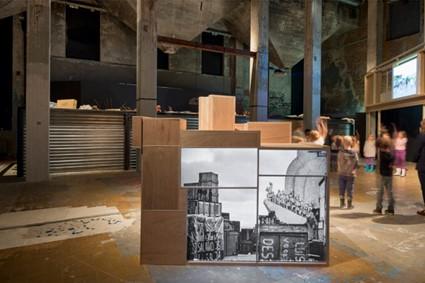 Figure 1 - Ângela Ferreira, Messy Colonialism, Wild Decolonization, 2015. Photo- Hendrik Zeitler
Figure 1 - Ângela Ferreira, Messy Colonialism, Wild Decolonization, 2015. Photo- Hendrik Zeitler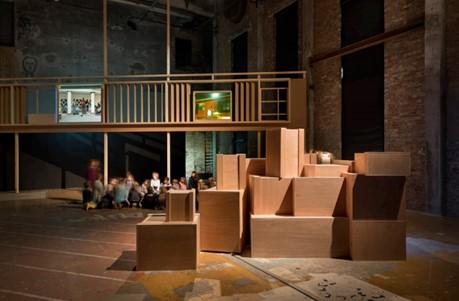 Figure 2 - Ângela Ferreira, Messy Colonialism, Wild Decolonization, 2015. Photo - Hendrik Zeitler
Figure 2 - Ângela Ferreira, Messy Colonialism, Wild Decolonization, 2015. Photo - Hendrik Zeitler
Ferreira’s video and sculptural installation Messy Colonialism, Wild Decolonization (2015) (Figures 1-2) involved an entry into several archives, as is usually the case in her work. In the archive of the Portuguese Cinemateca and in open-access online archives, she found filmic and photographic material relating to one particular site in Lisbon’s urban space: the Padrão dos Descobrimentos in the Praça do Império (“Empire Square”) in Belém. With this archival material she made a video which is screened on a wooden sculpture recreating the crates and boxes of the Portuguese settlers who left the former colonies in 1975. The artistic archive her own sculpture becomes shows us, in the video for which it also becomes screen and in its material and formal qualities, the way in which the site of the Padrão dos Descobrimentos symbolically marked both the beginning of the Portuguese colonial enterprise as it was envisioned by the Estado Novo regime since the late thirties and its collapse in the mid-seventies, after thirteen years of war waged against the Angolan, Mozambican and Guinean liberation movements. The video begins with images of the building of the Padrão dos Descobrimentos, a monument to the so-called Portuguese Discoveries inaugurated, in a temporary version, in the context of the Exposition of the Portuguese World. This exhibition was organized by the regime in 1940 to celebrate the anniversary of the birth of the nation in 1140 and of the restoration of Portuguese independence from Spain in 1640. A permanent version of the Padrão was built and inaugurated in 1960, in commemoration of the anniversary of the death of Henry, the Navigator in 1460 – the inaugural, historical and mythical figure of the socalled Age of the Discoveries.5 The images pertain to the film news Imagens de Portugal no. 186 (1959) and Imagens de Portugal no. 193 (1960), the latter of which includes images of the making of the sculptures that became the Padrão’s main decorative elements at the atelier of the sculptor Leopoldo de Almeida. The lateral sides of the monument, in the shape of a caravel facing the Tagus estuary, are occupied by an ascending parade of kings, conquerors, explorers, scholars and poets, led by Henry, the Navigator, and sculpted in the large-scale, epic style typical of the Estado Novo statuary. The façade was designed in the form of a cross resembling a sword – a powerful metaphor of the entanglements between discoveries, civilizing mission and conquest. The films by means of which Ferreira recalls these histories were also made in the context of the Estado Novo’s propaganda initiatives (Piçarra, 2015, pp. 144-223).6 Therefore, her short-length silent video piece is a potent reminder of the regime’s ideological investment in grand cultural events, monumental public sculpture, architecture and cinema, in order to promote and celebrate itself, and of the fact that the histories of some of these cultural productions remain still today without much critical consideration 7.
The fact that such news films were sponsored and controlled by the regime underscores the importance of what comes next in Ferreira’s video piece. About forty years later, this site was one of the places where the wooden crates of the returned settlers piled up, some of which remained there for years waiting for clearance, caught up in the midst of the revolutionary period. The video ends with images taken by the photojournalist Alfredo Cunha in 1975, found in open-access online archives, depicting what Ferreira terms the “spoils of the end of colonialism … standing up against the Monument to the Discoveries”: the crates and boxes that the installation renders sculpturally.8 This is a work where, as often happens with Ferreira’s investigations, she looks and invites us to look at historical events in such a way as to do justice to their complexities and contradictions. She confronts us with the absence of a rigorous public debate on the violence of the colonial enterprise – a violence which predates the Estado Novo, as its own cultural manifestations celebrating historical moments of discovery and conquest make evident, but to which the regime added its own kind of dictatorial violence. Ferreira also considers, however, the contradictions of a decolonization process which involved the sudden and mass arrival of many Portuguese from the former colonies who were practically strangers to the former metropolis and unwanted by the revolution.
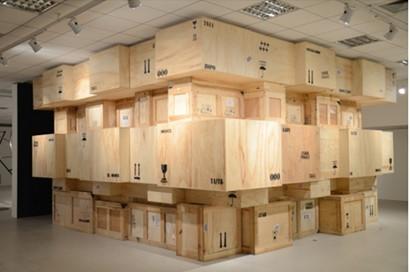 Figure 3 - Kiluanji Kia Henda, Concrete Affection – Zopo Lady, 2014.
Figure 3 - Kiluanji Kia Henda, Concrete Affection – Zopo Lady, 2014.
Similarly to Ferreira’s, many of Henda’s examinations also take urban space and architectural landscape, including those of built, destroyed, re-appropriated and re-imagined monuments, as the main lens through which to look at the past, present and future9 . And like Ferreira, he also turned wooden crates and boxes into a sculptural archive and screen.
Henda adapts the script for his video and sculptural installation Concrete Affection – Zopo Lady (Figures 3-7) from the first, Luanda-based chapter of Kapuscinski’s narration. Henda’s is a fairly free adaptation, as personal and poetic as its source, but still somewhat faithful to it. It begins with what might be accurately considered the pervasive metaphor in Kapuscinski’s first chapter – Luanda as “desert”; not simply deserted and empty, but also, metaphorically, dry, dying of drought, a dust- and sand-covered skeleton made of empty streets, walls and roofs. Not surprisingly, Concrete Affection opens with the panoramic aerial view of a desert, a recurring theme in Henda’s oeuvre, emerging here as a nightmarish dream from which the first-person voice-over and main protagonist awakes.10 The video then focusses on the empty urban landscape of Luanda, while the walking narrator, like Kapuscinski “a wanderer in the desert” looking for a spring or well (p. 236), tells a personal story about being alone and lost in a dying city. In Henda’s version, this is a city of concrete, and of “concrete” ambivalent “affections”, as contradictory and difficult to “box”, to paraphrase the artist,11 as what came to be effectively packed in the delusional and yet very solid “wooden city” of crates and boxes. The narrative spans the duration of one day, from dawn to dusk to dawn again, in a deserted contemporary Luanda (parts of the video were shot on the very early morning of January 1st 2014, when Luanda was sleeping after New Year celebrations). The protagonist’s words (in Henda’s version, the main character is one of the many Portuguese and white Angolans who had to leave the country) fictively resituate the urban, architectural and natural landscape of the city in 1975 (Figure 4).
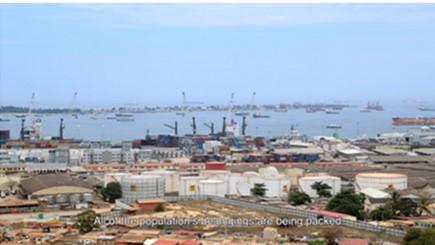 Figure 4 - Kiluanji Kia Henda, Concrete Affection. Zopo Lady, 2014. Video stills
Figure 4 - Kiluanji Kia Henda, Concrete Affection. Zopo Lady, 2014. Video stills 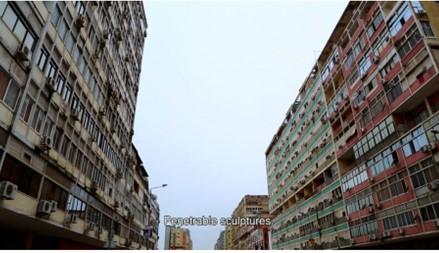 Figure 5 - Kiluanji Kia Henda, Concrete Affection. Zopo Lady, 2014. Video stills
Figure 5 - Kiluanji Kia Henda, Concrete Affection. Zopo Lady, 2014. Video stills
Significantly, in Henda’s video, contrary to Kapuscinsky’s description where nothing remains beyond desert and death, Luanda’s architecture is not simply described as a landscape of concrete, as dry, dead and alien as the desert haunting the narrator’s dream. It is also portrayed in sculptural terms: as a set of penetrable huge concrete sculptures, of “sculptural refuges”; as “organic statuary, endowed with a soul” (Figure 5)12. these architectures tame and, at the same time, bend to nature. Following the footsteps of this invisible wanderer’s voice, the viewer is shown a sort of urban skeleton, a chaotic grid of modernist streets, walls and rooftops, the quasi-sculptural structure of modernist Luanda. By looking at this period of decolonization, independence, revolution and beginning of the civil war, in a Cold War context, Henda is also offering a cinematic portrait, a visual archive of the contemporary remnants of Luanda’s modernist architectural heritage (Magalhães & Gonçalves, 2009; Vaz Milheiro, 2012). Built in the late colonial period and re-appropriated upon independence, this heritage has been going through processes of demolition and replacement by grand new urban regeneration projects, notably in Luanda’s downtown and seaside, where Dubai-like skyscrapers stand out (Schubert, 2015; Soares de Oliveira, 2015). Because they are so expensive, many are often left empty and deserted, in what constitutes yet another type of desert in this story. By examining that particular historical moment, Henda invites us to look at the complex ways in which modern architecture in Luanda was an integral part of the so-called modernizing plans of the last decades of Portuguese colonialism in Angola. Luanda and other cities were places of architectural, urban and social experimentation by more progressive architects, where segregation nonetheless persisted, to finally become spaces for a modernity re-appropriated, recreated, adapted and inhabited by Angolans after independence. Moreover, Henda’s investigation does not forget the ruins of modernity left by the Cold War and the long-term civil war, and the new empty ruins of global and oligarchic capitalism’s grand modernizing urban projects. Following, while at the same time departing from, Kapuscinski’s 1976 Another Day of Life, Henda’s Day in the past is filmed from this past’s future to speak to the present. One should not forget that this video work was commissioned, alongside several other films by artists from Mozambique, Guinea-Bissau, Cape Verde, São Tomé e Príncipe and Portugal, for the exhibition Ilha de São Jorge, curated by Beyond Entropy for the 14th Architecture Biennale in Venice in 2014. This project responded to and tried to open up the Biennale theme, Absorbing Modernity, 1914-2014, proposed by its curator, Rem Koolhaas, by looking at how modernity was “conceived, developed, built, dwelled, absorbed, rejected” in these five Portuguese-speaking African countries (Vaz Milheiro, Serventi & Nascimento, 2014, p. 7).
But its story does revolve around that particular historical moment in 1975 and the main protagonist’s painful decision to leave, in one day, a beloved and absent white woman and the city where he lived his whole life. The woman is the Zopo Lady mentioned in the title, whose face, skin and body, though more undulating like the bay than rectilinear like the city, seem, at times, to metaphorically equate the face, skin and body of Luanda itself – that is, the white, European, colonial Luanda, about to be abandoned and to disappear (Figure 6)13. As the evening progresses, the image of both city and woman oscillates between fear and desire, to become mysteriously repulsive. Gunshots are heard, the narrator seeks refuge at home (the Hotel Tivoli of Kapuscinski’s narrative was filmed in the modernist Hotel Globo in downtown Luanda) and another nightmare begins, this time with countless, small, red crosses emerging from and within a single, large, green cross (Figure 7). This is the green light for countless deaths, for war. The video ends with the defeated narrator waking up from this premonition, closing his box and escaping through water, by sea and boat. Henda wrote that his video is also, from an intimate and personal perspective, about “the relation between space and collective memory confronted by the vital and mandatory need to emigrate”.14 Something very similar, as we shall see, could be said of Délio Jasse’s Endless Absence (2014). From the past or the future, from history, memory and fiction, through the moving images of video, photography and installation, in both artists’ works, spectral faces, more or less explicitly, emerge from and merge with the landscape of cities by the sea, their modernist architectural “boxes”, the colonial boxes of departing settlers, stamped like passports and visas, appearing on the disappearing structure of video and water screens.
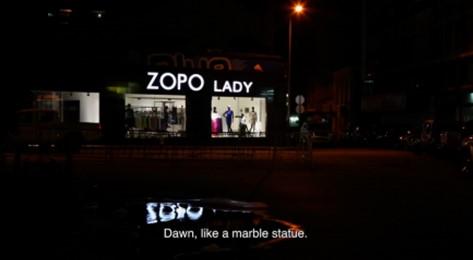 Figure 6 - Kiluanji Kia Henda, Concrete Affection. Zopo Lady, 2014. Video stills
Figure 6 - Kiluanji Kia Henda, Concrete Affection. Zopo Lady, 2014. Video stills  Figure 7 - Kiluanji Kia Henda, Concrete Affection. Zopo Lady, 2014. Video stills
Figure 7 - Kiluanji Kia Henda, Concrete Affection. Zopo Lady, 2014. Video stills
Indeed, Jasse’s artistic archives, palimpsests and “liquid archaeologies” also speak of and to the conflicting relation between space, collective memory and displacement, from a personal perspective. Having examined in previous works such as Schengen (2010) (Figure 8), and from his own experience, a condition of diasporic hybridity, disturbing the fixities of cultural and racial stereotypes (Bhabha, 1994; Clifford, 1997; Hall, 1990; Mercer, 2008), in Endless Absence (2014) (Figures 9-10), Jasse complexifies temporally dislocations in space and movements across borders by invoking phantasmatic presences of the colonial past in the urban space of contemporary Luanda. By means of photographic compositions made analogically, he juxtaposes appropriated photographs of anonymous people, mostly acquired in Lisbon’s flee market, and his own images of the unrecognizable Luanda which he “misencountered” (“desencontrou”) twelve years after the diaspora15. To these, he adds the stamps typically found in passports and visas, some of which explicitly refer to the departures from Angola and Portugal in 1961 – that is, to the movements of those trying to escape war and conscription –, while others, issued by the Immigration and Borders Service in Portugal, or the Migration and Foreigners Service in Angola, display much more recent dates.
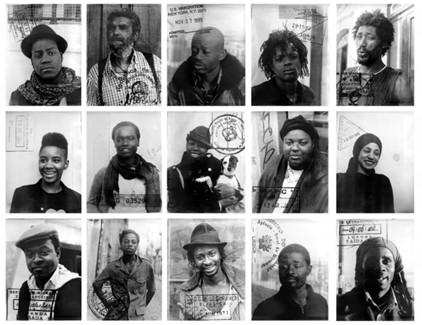 Figure 8 - Délio Jasse, Schengen, 2010.
Figure 8 - Délio Jasse, Schengen, 2010.  Figure 9 - Délio Jasse, Endless Absence, 2014.
Figure 9 - Délio Jasse, Endless Absence, 2014. 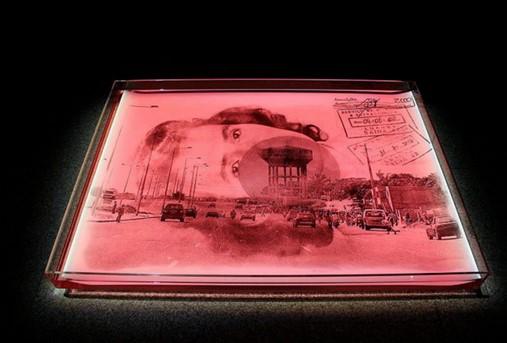 Figure 10 - Délio Jasse, Endless Absence, 2014.
Figure 10 - Délio Jasse, Endless Absence, 2014.
As in the works discussed previously, what is being critically examined here is the consequences of non-inscription and amnesia, not only in Portugal, but also in the urban fabric and architectural landscape of Luanda, going through accelerated gentrification (Schubert, 2015; Soares de Oliveira, 2015). Inscription through visual and material obstruction is at the service of a politics of history and an ethics of memory. Process is aesthetically, conceptually and ethico-politically relevant. Indebted to the tradition of documentary photography but having learnt the art of working per layers proper to serigraphy or silk-screen, Jasse is driven by a constant reflexion about the constructed nature, somewhere between fiction and reality, not only of memory, indeed a central theme, but also of the photographic image. The installation of Endless Absence, with its photographic compositions floating in acrylic boxes placed on the museum floor, enacts, in an almost theatrical fashion, a kind of choreography of liquid spectres, of undulating faces emerging from the landscape. It evokes, however, not so much the theatre’s black box as it does the analogic photography’s dark room and developing process, fundamental in Jasse’s oeuvre.
His practice is marked by an interest for histories and memories, both individual and collective, both personal and anonymous. He is fascinated by the real stories he ignores and the fictional stories he conjectures, told by strangers’ faces in old photographs – a fascination which he de-fetishizes through his use of materials and techniques. He reinvents the processes of analogic photography, by transforming the rarity of certain materials and equipment in opportunity for experimentation – in a sort of game between disappearing historical reality and fiction made real, or act of re-inscription of the past, not nostalgic but resistant to amnesia, also in terms of process, whether chemical or mechanic. Alongside such concerns, his work is also an ongoing investigation on the notion of document. The research on the process-based and constructed nature of both photography and documents serves the larger purpose of an ethico-political questioning around notions of national, ethnic and cultural identity. This is done by means of photographic compositions and installations which deconstruct the purported immediacy, transparency and neutrality of documentary photography and of national identification documents (whose photographic component contributes to the attribution of a supposedly defined identity, thereby allowing or forbidding movement across geopolitical and cultural borders). In Endless Absence, the presence of these liquid screens, visual palimpsests in water, also relates to the idea of a maritime geography, of the ocean as political space, both historical and contemporary, of passage, violence and hybridization, as the works of Édouard Glissant (1997) and Paul Gilroy (1993; 2010),16 in very diverse but relatable ways, remind us, and, rather urgently, recent events on Mediterranean shores.
As Jacques Derrida noted not only in the context of his elaborations on the notion of “hauntology”, but also of what he termed “spectropoetics” – which, in line with Jacques Rancière, can only constitute itself as a politics (2004), a “spectropolitics” – one of the ethico-political tasks of the present is precisely to learn to live more justly, which here, for Derrida, means “to learn to live with ghosts, in the upkeep, the conversation, the company, or the companionship, in the commerce without commerce of ghosts” (1994, Exordium, non-numerated page). He adds that “this being-with specters would also be, not only but also, a politics of memory, of inheritance, and of generations” (1994, Exordium, non-numerated page). He, who obsessively chased etymological spectres, in a kind of poetics of spectres and politics of memory, inheritance and generations also in terms of language as writing, difference and deferral (1976; 2001), called our attention to the fact that spectres belong, just like us, spectators, to the frequency of a certain visibility – in the case of the spectre, the visibility of the invisible – and that the screen, whether water or cinema screen, “always has, at bottom, in the bottom or background that it is, a structure of disappearing apparition” (1994, p. 125).
This structure of disappearing apparition but apparition nonetheless, disappearing apparition as form of resistance, in movement and of images, against historical amnesia and non-inscription is also discernible in the work of Daniel Barroca. This is a structure which calls to mind Georges Didi-Huberman’s lessons on surviving images and images in spite of all (2002; 2008) and Avery Gordon’s writings on haunting according to which “a disappearance is real only when it is apparitional” (2008, p. 63). Barroca operates through several sorts of formal and material obstructions, not devoid of an idea of violence reinforced by the works’ titles; a destruction of the image which allows for some sort of survival, redrawing, retracing, reconnecting, remapping, reconfiguring – a disappearing apparition; the appearing of the disappearance. Like Jasse, Daniel Barroca also unveils and inscribes by superimposing obfuscating layers. In Reconfiguration of a Scratched Line (2011) (Figure 11), Maps of Complicities (2011) and Obstruction of Complicities (Layered Objects #3, #4, #5) (2011) (Figure 12), scratched lines and metal blades map, while obstructing, the complicities of soldiers’ gazes and comradery. In the first two works, this is done by literally scratching on the surface of the photographic images where the soldiers appear. But such scratches make up rather precise webs of lines, mapping and connecting soldiers’ gazes while at the same time erasing their eyes (a literal piercing, with needles becoming an integral part of the installation, occurs in Pierced 16 On the notion of the Lusophone Black Atlantic, see Naro, Sansi-Roca & Treece, 2007; Vale de Almeida, 2004. Distance [2011]). In Obstruction of Complicities (Layered Objects #3, #4, #5), the same process of drawing abstract forms from the visual obstruction of the documentary photographic images that function as source takes place. But this time, the resulting maps are opaque, as they are made of metal blades superimposed on the photographs, acquiring a three-dimensional quality. Here, Barroca’s Scratched Line and Maps become Layered Objects. In other instances of the same series, the artist turns the images of the soldiers into obfuscating objects by layering them with engraved glass, glass powder (#6, #7) and epoxy resin (#1). Similarly, in Obstructed Images (2011) (Figure 13), glasses of murky water hide, while simultaneously marking, the faces of soldiers on photographs displayed on a table. The glasses interrupt the visual access to the photographic documentation of the soldiers’ gatherings and signal the difficulty of clear and translucent recollection of the experience of the war, while the installation as a whole evokes its memory in the form of the shadowy leftovers of a day after.
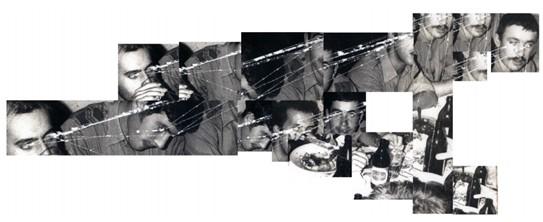 Figure 11 - Daniel Barroca, Reconfiguration of a Scratched Line, 2011.
Figure 11 - Daniel Barroca, Reconfiguration of a Scratched Line, 2011. 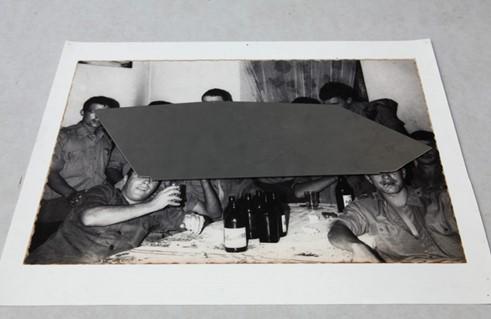 Figure 12 - Daniel Barroca, Obstruction of Complicities Layered Object, 2011.
Figure 12 - Daniel Barroca, Obstruction of Complicities Layered Object, 2011. 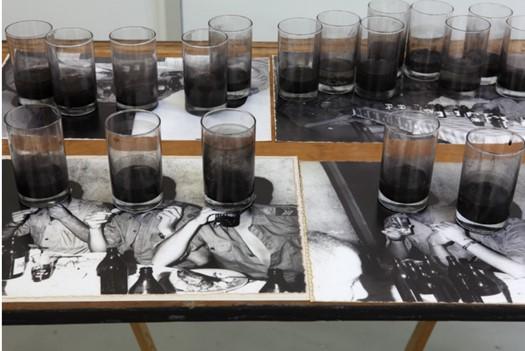 Figure 13 - Daniel Barroca, Obstructed Images, 2011.
Figure 13 - Daniel Barroca, Obstructed Images, 2011.  Figure 14 - Daniel Barroca, Soldier Playing with Dead Lizard, 2008.
Figure 14 - Daniel Barroca, Soldier Playing with Dead Lizard, 2008.
Who are these soldiers? They are the same who had already made a “disappearing apparition” on the monitor screens of a previous work – the eight-channel video installation Soldier Playing with Dead Lizard (2008) (Figure 14). This was one of the first times Barroca appropriated images from the photographic war album his father compiled while fighting along the Portuguese Armed Forces in Guinea-Bissau. Many who fought in the war assembled similar albums – common and yet unspoken presences in the homes of many Portuguese families today. Barroca exposes the existence of his father’s by using it as archival source for the video installation, but visually blurs its images, abstracts them, obstructs them through the up-close and zoomed-in camera movement. For this work he also retrieved the sound archive of his father’s breathing, in the intervals of the words, here omitted, obstructed, with which he narrated his experience of the war to cassettes he would then send to his partner, the artist’s mother. According to Gordon, spectral matter calls for an ethico-political task of listening (2008).17 In line with Cathy Caruth, traumatic memory cannot be known nor seen but rather ethically sent to another generation and another future (1996, p. 111).
Intergenerational and familial memory – in this case, screen rather than traumatic memory – is also the object of Raquel Schefer’s video investigations. Granny (Muidumbe) (2009) begins with images of pouring rain, filmed in 1960 by Schefer’s grandfather, author of the domestic film which she reemploys in order to make her own short-length piece. The film documents the moment when the family arrived at their new residence in Muidumbe in northern Mozambique, where Schefer’s grandfather was to take up the post of local head of the colonial administration. The film revolves around the figure of her grandmother (Figure 15) and her playful and happy, almost childish, movements for the camera in the veranda of the new home, under whose roof the family sheltered from the rain while waiting to gain access to the interior. White and black bodies occupy the same exiguous space, a sort of threshold between outdoors and indoors, but the dividing line is rather patent in the way the white bodies move, be they masculine or feminine, in contrast to the quiet immobility of apparently submissive black bodies. The year is 1960 and the marital and familial happiness of this domestic space is but a screen (Freud, 2006 [1899]) veiling the massacre of Mueda, which occurred on June 16th the same year, just thirty kilometres away, in an area described as “peaceful” and inhabited by “friendly and orderly people”.18 Schefer progressively incarnates the figure of her grandmother: at the beginning of the film, she takes measurements for a replica of her grandmother’s outfit (trousers, a blouse and a hat); then, already dressed like her grandmother, but not yet playing her part, she reads aloud, as if rehearsing, the words with which her grandmother describes the arrival at the new house in Muidumbe; at the end, in the out-offocus shots that blur the distinction between her and her grandmother, while still permitting recognition, she walks through the garden and dances, imitating the grandmother’s gestures seen in the archival moving images of her grandfather’s film (Figure 16). In the final scenes, Schefer’s voice-over, always acknowledged as granddaughter, describes that which, unlike the peaceful life of friendly and orderly people on the screen, was neither photographed, nor filmed (Figure 17). While observing the domestic happiness of Muidumbe, we listen, through Schefer’s words, to the dead, the spectres, the ghosts of Mueda, whom she invites to enter her grandparents’ house.
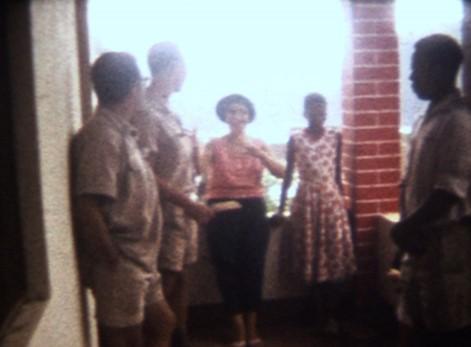 Figure 15 Raquel Schefer, Granny Muidumbe 2009. Video Still
Figure 15 Raquel Schefer, Granny Muidumbe 2009. Video Still 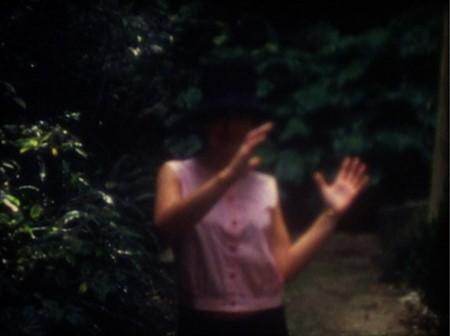 Figure 16 Raquel Schefer, Granny Muidumbe 2009. Video Still
Figure 16 Raquel Schefer, Granny Muidumbe 2009. Video Still 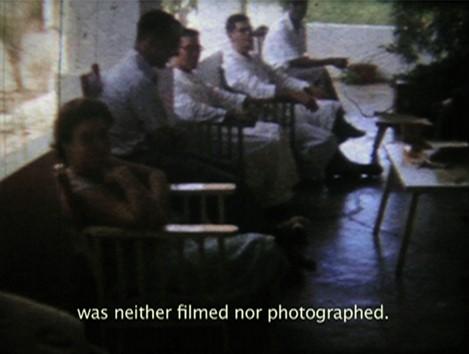 Figure 17 Raquel Schefer, Granny Muidumbe 2009. Video Still
Figure 17 Raquel Schefer, Granny Muidumbe 2009. Video Still
An epistemic and ethico-political decolonization of our globalized post- and neocolonial condition requires that we look into what remains of the past that continues to affect our present, the ways in which nostalgia of the empire, the silences of traumatic memory and the repressions of amnesia continue to impact on the socio-economic and racial divides of our contemporary societies (Appadurai, 2013; Chakrabarty, 2000; Comaroff, 2012; Mbembe, 2014,2015; Mignolo, 2011; Sousa Meneses &,? 2010; Spivak, 1999). For the task of unveiling, without freezing, without fetishizing, an always disappearing apparition, the past as image flashing up at those moments of danger when it is recognized by the present as one of its concerns (Benjamin, 1999, p. 247), the archive becomes an indispensable tool. Although place of commencement and commandment, Derrida noted that “the archive always works, and a priori, against itself”, harbouring both the Eros of preservation and the Thanatos of chaos, disorder, loss and destruction (1996, pp. 11-12). It always works against itself, in line with Ann Stoler, because “reading along the archival grain” is precisely what allows us to see its “granular rather than seamless texture”, “the rough surface that mottles its hue and shapes its form” (Stoler, 2009, p. 53). Despite the problems arising from the commoditization of artworks in the uneven circuits of contemporary art,19 the “rough surfaces” of the artistic archives and screens I have been discussing here, more granular than seamless, might be said to do some sort of justice to the epistemic difficulty and ethico-political necessity of our critical encounter with history and memory, including private and familial, in view of the decolonization of our knowledges and affects, of our theories and practices.
Filmography & artworks
Barroca, D. (2008). Soldier playing with dead lizard . Barroca, D. (2011).
Reconfiguration of a scratched line [Inkjet print mounted on the wall]. Barroca, D. (2011).
Obstruction of complicities (Layered object #5) [Metal blade on inkjet print]. Barroca, D. (2011).
Obstructed images [Glasses with murky water on inkjet prints on wooden table]. Ferreira, A. (2015).
Messy colonialism, wild decolonization [Mixed-media installation]. Lisbon: Galeria Filomena Soares.
Henda, K. K. (2014-2015). Concrete affection – Zopo lady [Mixed-media installation]. Lisbon and Naples: Galeria Filomena Soares and Galleria Fonti.
Jasse, D. (2010). Schengen [Photography]. Lisbon: Galeria Baginski. Jasse, D. (2014). Endless absence [Mixed-media installation].
Lisbon: Galeria Baginski. Schefer, R. (2009). Granny (Muidumbe) .
Bibliographic references
Agamben, G. (1998). Homo sacer: Sovereign power and bare life. Trans. Daniel Heller-Roazen. Stanford, Calif.: Stanford University Press.
Appadurai, A. (2013). The future as cultural fact: Essays on the global condition. London: Verso.
Azoulay, A. (2008). The civil contract of photography. New York, London: Zone.
Balona de Oliveira, A. (2008). The paradox of an archive: The anarchival-archival art of Thomas Hirschhorn. Retrieved from /seconds 8. http://www.slashseconds.org/issues/002/004/articles/aoliveira/
Barroca, D. (2008). Daniel Barroca: Soldier playing with dead lizard. Berlin: Künstlerhaus Bethanien.
Barroca, D. (2013a). Daniel Barroca: Uma linha raspada. Vila Nova da Barquinha: Câmara Municipal Vila Nova da Barquinha.
Barroca, D. (2013b). O importante é ligar a cabeça à mão. In N. Faria (Ed.). Cadernos CIAJG - Encontros para Além da História (pp. 56-69, pp. 211-219). Guimarães: Guimarães 2012 Capital Europeia da Cultura.
Beech, D. (2015). Art and value: Art’s economic exceptionalism in classical, neoclassical and marxist economics. Boston: Brill.
Benjamin, W. (1999). Theses on the philosophy of history. Illuminations (pp. 253-264). London: Pimlico.
Bhabha, H. K.(1994). The location of culture. London and New York: Routledge.
Butler, J. (2009). Frames of war: When is life grievable? London: Verso.
Caruth, C. (1996). Unclaimed experience: Trauma, narrative, and history. Baltimore and London: Johns Hopkins University Press.
Chabal, P. (2002). A History of postcolonial Lusophone Africa. London: Hurst & Co.
Chakrabarty, D. (2008). Provincializing Europe: Postcolonial thought and historical difference. Princeton, N.J.: Princeton University Press.
Clifford, J. (1997). Routes: Travel and translation in the late twentieth century. Cambridge, Mass., London: Harvard University Press.
Comaroff, J. & Comaroff, J. L. (2012). Theory from the south, or, how Euro-America is evolving toward Africa. Boulder: Paradigm Publishers.
Demos, T. J. (2013a). The migrant image: The art and politics of documentary during global crisis. Durham and London: Duke University Press.
Demos, T. J. (2013b). Return to the postcolony: Specters of colonialism in contemporary art. Berlin: Sternberg Press.
Derrida, J. (1976). Of grammatology. Baltimore: Johns Hopkins University Press.
Derrida, J. (1994). The specters of Marx: The state of the debt, the work of mourning, and the New International. London: Routledge. Kindle Edition.
Derrida, J. (1996). Archive fever: A Freudian impression. Chicago: University of Chicago Press.
Derrida, J. (2001). Writing and difference. London and New York: Routledge.
Didi-Huberman, G. (2002). L’image survivante: Histoire de l’art et temps des fantômes selon Aby Warburg. Paris: Les Éditions de Minuit.
Didi-Huberman, G. (2008). Images in spite of all: Four photographs from Auschwitz. Chicago: University of Chicago Press.
Fernandes, A. (2013). Segredos da descolonização de Angola. Lisboa: Dom Quixote.
Ferreira de Carvalho, N. (Ed.) (2014). BES Photo 2014 – Délio Jasse. Lisboa: Museu Coleção Berardo e Banco Espírito Santo.
Figueiredo, L. (2009). Ficheiros secretos da descolonização de Angola. Lisboa: Alêtheia Editores.
Foster, H. (2004). An archival impulse. October, 110, 3-22.
Freud, S. (2006[1899]). Screen memories. In A. Philips (Ed.), The Penguin Freud Reader (pp. 541-561). London: Penguin Books.
Freud, S. (1961[1920]). Beyond the pleasure principle. New York and London: W. W. Norton.
Gaeta, A. & GT, R. (Eds.) (2015). On ways of travelling – Representação oficial de Angola na 56ª Exposição Internacional de Arte, La Biennale di Venezia. Luanda: Ministério da Cultura de Angola.
Gil, J. (2004). Portugal, hoje: O medo de existir. Lisboa: Relógio D’Água. Gil, J. (2009). Em busca da identidade. O desnorte. Lisboa: Relógio D’Água.
Gilroy, P. (1993). The black Atlantic: Modernity and double consciousness. London: Verso.
Gilroy, P. (2010). Darker than blue: On the moral economics of black Atlantic culture. Cambridge, Mass., London: The Belknap Press of Harvard University Press.
Glissant, É. (1997). The poetics of relation. Ann Arbor: University of Michigan Press. Godfrey, M. (2007). The artist as historian. October, 120, 140-172.
Gordon, A. (2008). Gosthly matters: Haunting and the sociological imagination. Minneapolis: University of Minnesota Press.
Hall, S. (1990). Cultural identity and diaspora. In J. Rutherford (Ed.), Identity: Community, Culture, Difference (pp. 222-237). London: Lawrence & Wishart.
Kapuscinski, R. (2001) (1976). Another day of life. London: Penguin Books. Kindle Edition.
Laub, D. (1992). Bearing witness, or the vicissitudes of listening. In S. Felman & D. Laub (Eds.). Testimony: Crises of Witnessing in Literature, Psychoanalysis and History (pp. 57-74). New York,
London: Routledge. Lourenço, E. (1982). O labirinto da saudade. Lisboa: Publicações D. Quixote.
Lourenço, E. (2014). Do colonialismo como nosso impensado. Lisboa: Gradiva.
Magalhães, A. & Gonçalves, I. (2009). Moderno tropical, arquitectura em Angola e Moçambique, 19481975. Lisboa: Tinta da China.
Mateus, D. C. (2006). Memórias do colonialismo e da guerra. Lisboa: Edições Asa. Mateus, D. C. & Mateus, Á. (2011). Angola 61: Guerra colonial, causas e consequências. Lisboa: Texto Editores.
Mbembe, A. (2001). On the postcolony. Berkeley, London: University of California Press.
Mbembe, A. (2014). Crítica da razão negra. Lisboa: Antígona.
Mbembe, A. (2015). Decolonizing knowledge and the question of the archive. Retrieved from http://wiser. wits.ac.za/system/files/Achille%20Mbembe%20-%20Decolonizing%20Knowledge%20and%20the%20 Question%20of%20the%20Archive.pdf.
Meneses, M. P. & Martins, B. S. (Org.) (2013). As guerras de libertação e os sonhos coloniais: Alianças secretas, mapas imaginados. Coimbra: Almedina.
Mercer, K. (Ed.) (2008). Exiles, diasporas and strangers. London and Cambridge, Mass.: Iniva and MIT Press.
Mignolo, W. D. (2011). The darker side of Western modernity. Global futures, decolonial options. Durham: Duke University Press.
Pélissier, R. & Wheeler, D. (2011). História de Angola. Trans. Pedro Serras Pereira, Paula Almeida. Lisboa: Tinta da China. Piçarra, M. do C. (2015). Azuis ultramarinos. Propaganda colonial e censura no cinema do Estado Novo. Lisboa: Edições 70.
Pinto Ribeiro, A. (Ed.) (2013). Present tense. Lisboa: Fundação Calouste Gulbenkian.
Naro, P.; Sansi-Roca, N. & Treece, R. (Eds.) (2007). Cultures of the Lusophone black Atlantic. New York: Palgrave Macmillan.
Ractliffe, J. (2008). Terreno ocupado. Johannesburg: Warren Siebrits.
Ractliffe, J. (2010). As terras do fim do mundo. Johannesburg, Cape Town: Michael Stevenson.
Ractliffe, J. 2015. The borderlands. México City: RM.
Rancière, J. (2004). The politics of aesthetics: The distribution of the sensible. London: Continuum.
Rancière, J. (2007). The future of the image. London and New York: Verso.
Ribeiro Sanches, M.; Clara, F.; Ferreira Duarte, J. & Pires Martins, L. (Eds.) (2011). Europe in black and white: Immigration, race, and identity in the “Old Continent”. Bristol, Chicago: Intellect, University of Chicago Press.
Rodrigues Lopes, S. (2010). Portugal sem destino. In. J. Neves (Coord.), Como Se Faz Um Povo: Ensaios em História Contemporânea de Portugal (pp. 227-242). Lisboa: Fundação EDP & Tinta da China.
Schubert, J. (2015). 2002, year zero: History as anti-politics in the ‘New Angola’. Journal of Southern African Studies 41, 4, 835-853.
Soares de Oliveira, R. (2015). Magnificent and beggar land: Angola since the civil war. London: C. Hurst & Co. Sousa Santos, B. & Meneses, M. P. (Org.) (2010). Epistemologias do sul. Coimbra: Almedina.
Spivak, G. C. (1999). A critique of postcolonial reason: Toward a reason of the vanishing present. London and Cambridge, Mass.: Harvard University Press.
Stallabrass, J. (2013). Memory of fire: Images of war and the war of images. Brighton: Photoworks.
Stoler, A. L. (2009). Along the archival grain: Epistemic anxieties and colonial common Sense. Princeton: Princeton University Press.
Stoler, A. L. (Ed.) (2013). Imperial debris: On ruins and ruination. Durham and London: Duke University Press.
Vale de Almeida, M. (2004). An earth-colored sea: “Race”, culture, and the politics of identity in the post-colonial Portuguese-speaking world. New York and Oxford: Berghahn Books.
Vaz Milheiro, A. (2012). Nos trópicos sem Le Corbusier: Arquitectura luso-africana no Estado Novo. Lisboa: Relógio d’Água.
Vaz Milheiro, A;, Serventi, S. & Nascimento, P. (2014). Ilha de São Jorge – Objects, buildings, cities, landscape and visions. London: Beyond Entropy Lda.
Article originally published in Comunicação e Sociedade, vol. 29, 2016, pp. 131 – 152.
- 1. I should clarify that my use of the terms “inscription” and “non-inscription” throughout this essay, although calling to mind José Gil’s Portugal, hoje: o medo de existir, is not indebted to this author’s elaborations on a supposed “Portugueseness”, which falls into a problematic essentialism (see Gil 2004; Gil 2009). Although my use of those terms signals the tendency towards the amnesia of, and lack of critical debate on, the empire in contemporary Portuguese society, it distances itself of any collective psychologizing, which ultimately culminates in stereotypical generalizations that elide the concrete realities of class-, race-, and gender-based inequalities. In other words, Gil’s work ends up colluding with that same amnesiac non-inscription he intends to criticize. For a useful critique of Gil’s work, and of Eduardo Lourenço’s O labirinto da saudade, see Rodrigues Lopes 2010, pp. 227-239.
- 2. These and all subsequent citations from Kapuscinski’s Another Day of Life refer to Kindle locations rather than pages, which are not provided in the Kindle Edition.
- 3. Kapuscinski’s Another Day of Life also played a crucial role in prompting the South African photographer Jo Ractliffe to begin her photographic projects in Angola: in Luanda first with Terreno Ocupado (2007) and, subsequently, just like Kapuscinski, in southern Angola with Terras do Fim do Mundo (2009). In The Borderlands (2013), she continues her investigations within South African borders. See Ractliffe 2008, 2010, 2015.
- 4. The IARN, Instituto de Apoio ao Retorno de Nacionais (Institute for the Support of the Return of Nacional Citizens), was created by the revolutionary government in 1975, in order to support the relocation of these thousands of former settlers. It was extinct in 1981.
- 5. The temporary version of the Padrão was designed by the architect Cottinelli Telmo, whose plan was kept for the permanent construction, led by António Pardal Monteiro
- 6. The newsreels Imagens de Portugal were made between 1953 and 1970.
- 7. The square in front of the Padrão is decorated with a large-scale floor piece in limestone, depicting a compass rose and a world map of the routes taken by the Portuguese during the so-called Age of the Discoveries. This square was offered to Portugal by apartheid South Africa, a fact which is seldom referenced.
- 8. See the video’s text component.
- 9. This is the case in works such as Redefining the Power (2011) and Balumuka (Ambush) (2011), both from the Series Homem Novo, and in Icarus 13 (2008), among others.
- 10. Other works where the desert is relevant are, for instance, Icarus 13 (2008) and the project A City Called Mirage (2014).
- 11. See the work’s synopsis on a private video link:”During the preparation of the box for the travel, the narrator is confronted by a platonic love for a woman, and the impossibility of boxing affections torments him and undermines his plans to escape”.
- 12. See the video’s script.
- 13. The woman’s name is inspired by the name of a clothing store chain in Luanda.
- 14. See the work’s synopsis on a private video link.
- 15. I am referring here to the title of one the photographic series by means of which Jasse examines, precisely, that re-encounter with Luanda: Desencontros (Misencounters) (2011). On this series, see, for example, Pinto Ribeiro, 2013.
- 16. On the notion of the Lusophone Black Atlantic, see Naro, Sansi-Roca & Treece, 2007; Vale de Almeida, 2004.
- 17. See also Laub 1992.
- 18. See the video’s script. This massacre was one of the events triggering the beginning of the FRELIMO armed struggle against Portuguese colonialism in Mozambique in 1964.
- 19. For a less pessimistic account, drawing on Marx’s own writings, on how art is not necessarily produced as a commodity, see Beech, 2015